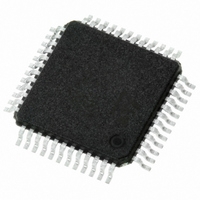TSA1204IFT STMicroelectronics, TSA1204IFT Datasheet - Page 25

TSA1204IFT
Manufacturer Part Number
TSA1204IFT
Description
IC CONV A/D 2-CH 12-BIT 48-TQFP
Manufacturer
STMicroelectronics
Datasheet
1.TSA1204IFT.pdf
(31 pages)
Specifications of TSA1204IFT
Number Of Bits
12
Sampling Rate (per Second)
20M
Data Interface
Parallel
Number Of Converters
2
Power Dissipation (max)
155mW
Voltage Supply Source
Analog and Digital
Operating Temperature
-40°C ~ 85°C
Mounting Type
Surface Mount
Package / Case
48-TQFP
Lead Free Status / RoHS Status
Lead free / RoHS Compliant
Other names
497-5435-2
TSA1204IFT
TSA1204IFT
Available stocks
Company
Part Number
Manufacturer
Quantity
Price
Company:
Part Number:
TSA1204IFT
Manufacturer:
PHI
Quantity:
45
Company:
Part Number:
TSA1204IFT
Manufacturer:
STMicroelectronics
Quantity:
10 000
TSA1204
10
Static parameters
Dynamic parameters
Definitions of specified parameters
Static measurements are performed using the histograms method on a 2 MHz input signal,
sampled at 50 Msps, which is high enough to fully characterize the test frequency response.
The input level is +1 dBFS to saturate the signal.
Differential non linearity (DNL)
The average deviation of any output code width from the ideal code width of 1 LSB.
Integral non linearity (INL)
An ideal converter exhibits a transfer function which is a straight line from the starting code
to the ending code. The INL is the deviation from this ideal line for each transition.
Dynamic measurements are performed by spectral analysis, applied to an input sine wave
of various frequencies sampled at 40 Msps.
The input level is -1dBFS to measure the linear behavior of the converter. All the parameters
are given without correction for the full scale amplitude performance except the calculated
ENOB parameter.
Spurious free dynamic range (SFDR)
The ratio between the power of the worst spurious signal (not always an harmonic) and the
amplitude of fundamental tone (signal power) over the full Nyquist band. It is expressed in
dBc.
Total harmonic distortion (THD)
The ratio of the rms sum of the first five harmonic distortion components to the rms value of
the fundamental line. It is expressed in dB.
Signal to noise ratio (SNR)
The ratio of the rms value of the fundamental component to the rms sum of all other spectral
components in the Nyquist band (f
harmonics. SNR is reported in dB.
Signal to noise and distortion ratio (SINAD)
Similar ratio as for SNR but including the harmonic distortion components in the noise figure
(not DC signal). It is expressed in dB.
The effective number of bits (ENOB) is easily deduced from the SINAD, using the formula:
SINAD= 6.02 × ENOB + 1.76 dB.
When the applied signal is not full scale (FS), but has an A
expression becomes:
SINAD
2Ao
=SINAD
Full Scale
+ 20 log (2A
s
/ 2) excluding DC, fundamental and the first five
0
/FS)
Definitions of specified parameters
0
amplitude, the SINAD
25/31













